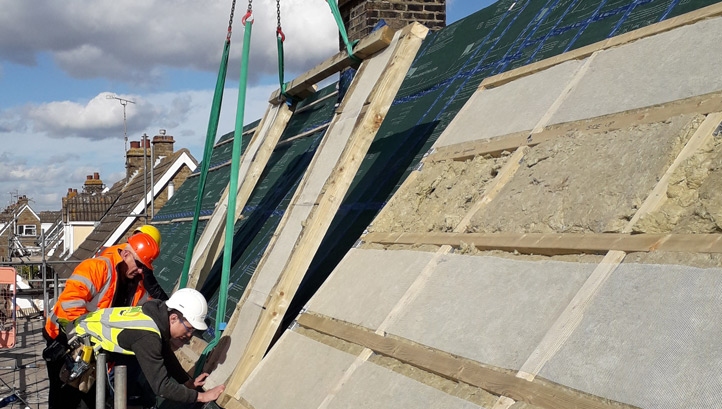A five-home pilot project has launched in Essex to create zero-carbon retrofit homes in the UK, fitting the buildings with solar photovoltaics (PV) and battery storage systems.

ENGIE will maintain the homes and guarantee their energy performance for a 30-year period
The pilot scheme will be located in Maldon, Essex, and has been set up in partnership by Moat Homes and energy and services firm ENGIE. The homes are renovates using the “Energiesprong” model that is designed to deliver a net-zero energy performance in short time frames at affordable costs.
The Energiesprong approach upgrades homes with a new exterior, fitting the outside of the building with new walls, windows, a solar roof and new electrical heating systems. Moat Homes has installed roof-mounted solar PV, battery systems, airtight wall-mounted panels, new energy efficient pitched roofs and MVHR (Mechanical Ventilation with Heat Recovery) units to heat and ventilate the buildings. New triple-glazed windows and new electric cookers have also been added to the properties.
The company claims that the final energy performance of each property will be near net-zero carbon. The project is being supported by funding from the European Union.
Moat’s director of property services Jason Amos said: “As Moat prides itself on its environmental responsibility and performance, we were incredibly keen to collaborate with Energiesprong UK and ENGIE to deliver this innovative solution.
“The whole house retrofit works being undertaken on our five Essex homes implement and encourage sustainable methods of conduct that involves the customer, contractor and housing provider alike. A project such as this operating at scale could help the Government meet carbon reduction targets, whilst simultaneously combatting fuel poverty issues.”
The long-term aim for the properties is for them to become fully self-sustaining, ideally drawing minimal, if any, energy from local grids.
ENGIE will maintain the homes and guarantee their energy performance for a 30-year period.
“The result of this innovative, scalable project demonstrates that there doesn’t have to be a choice between environmental performance and social responsibility,” ENGIE’s regional managing director for the places and communities division Simon Lacey said.
“This project has also enabled us to fully combine our expertise in energy, services and regeneration for the housing sector, in a way that delivers zero carbon homes with a long-term guarantee for energy performance and maintenance – providing peace of mind for partners and customers alike.”
Healthy homes
The UK has announced ambitions to increase the energy performance of its domestic housing stock. Around £3.6bn of investment has been set aside to upgrade around 500,000 homes through the Energy Company Obligation (ECO), and the Government has extended support on domestic energy-efficiency improvements from 2022 to 2028.
A long-term trajectory to improve energy performance standards – including upgrading private rented homes to Energy Performance Certificate Band C – will also be developed, but only where “cost-effective and affordable”.
All fuel-poor homes will be upgraded to Energy Performance Certificate Band C by 2030, and an aspiration is in place for as many homes as possible to reach this level on energy performance. Again, this will only be targeted where “practical, cost-effective and affordable”.
Elsewhere, Barclays has launched a Green Home Mortgage scheme, offering homebuyers preferential interest rates and savings of more than £1,300 on energy-efficient new build houses.
Last year, 10 homes in the village of Sneinton near Nottingham became the first Energiesprong houses in the UK. Developer Melius Homes and social landlord Nottingham City Homes worked together on the scheme, with solar photovoltaic roofing supplied by UK manufacturer, Viridian Solar.
Around 2,000 Energiesprong homes have been completed in the Netherlands, of which around 60% were renovations of existing properties and 40% new builds.
Matt Mace
